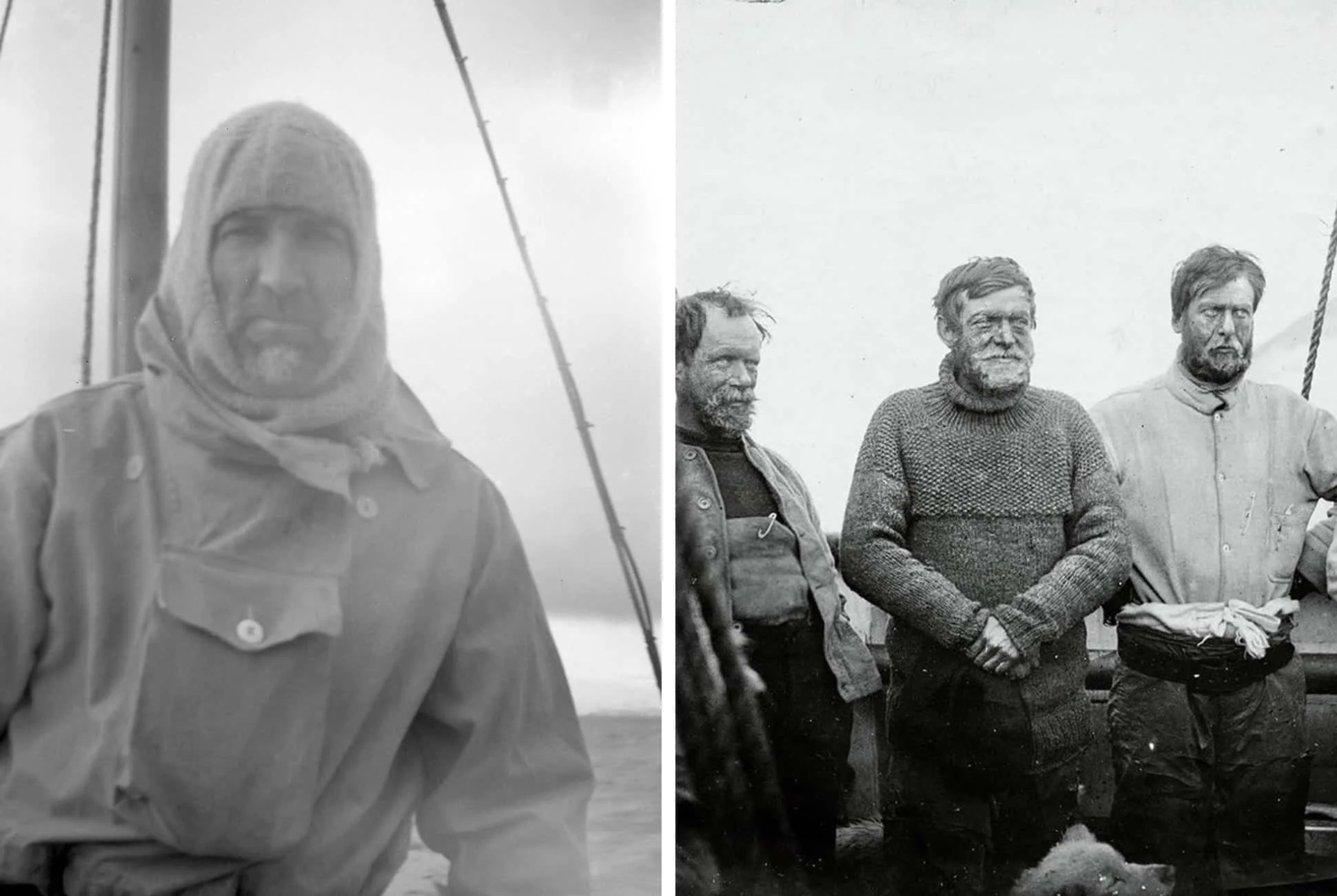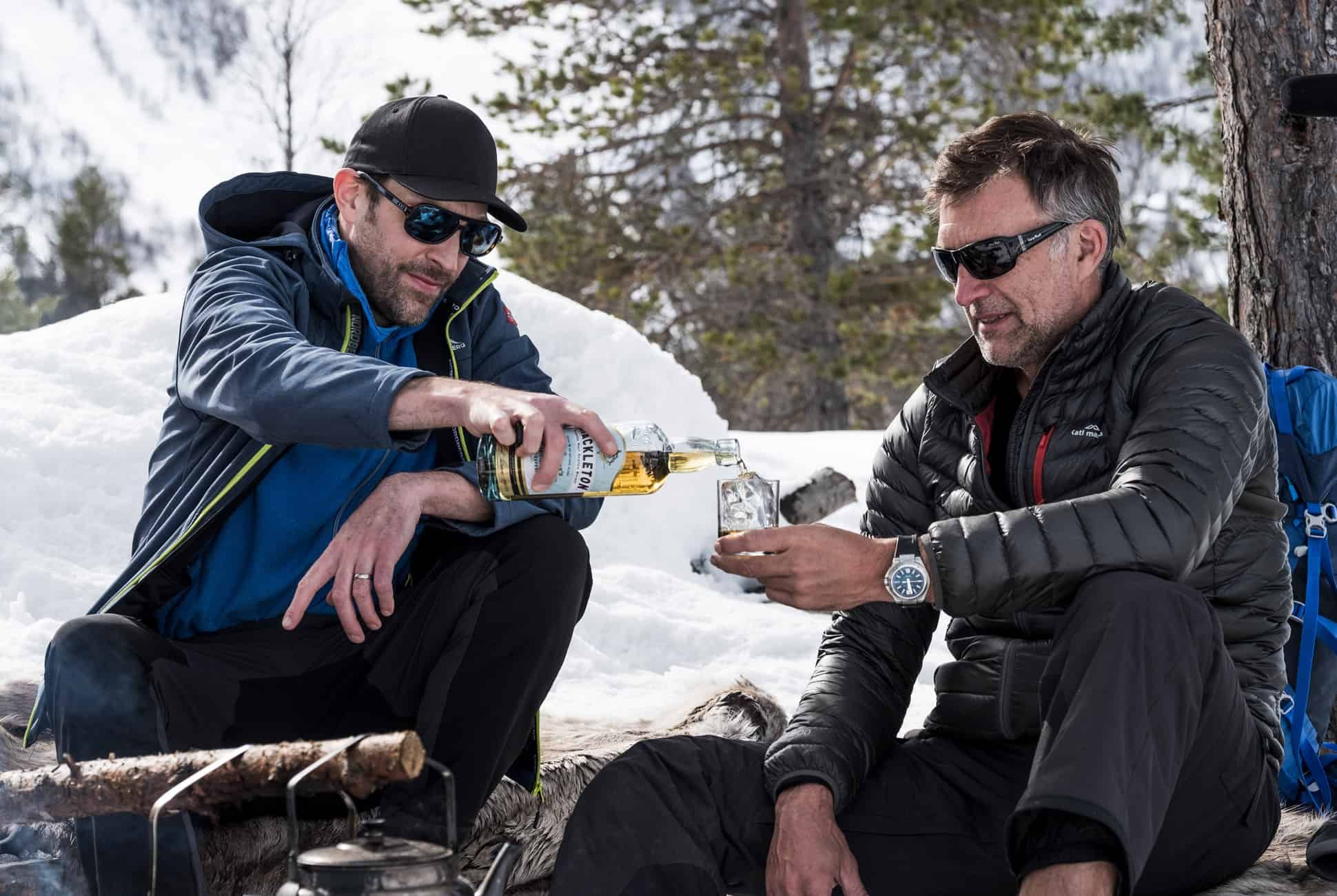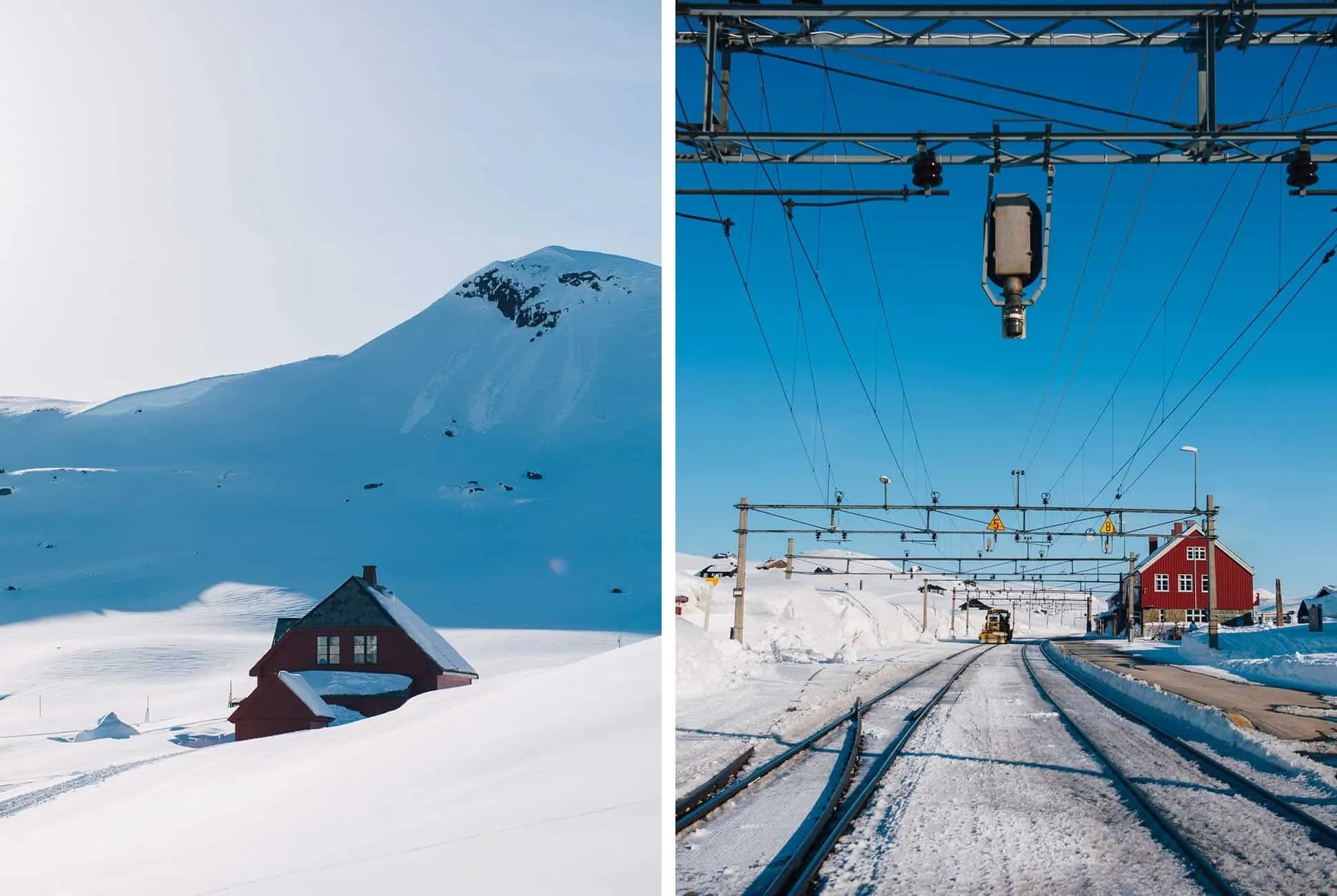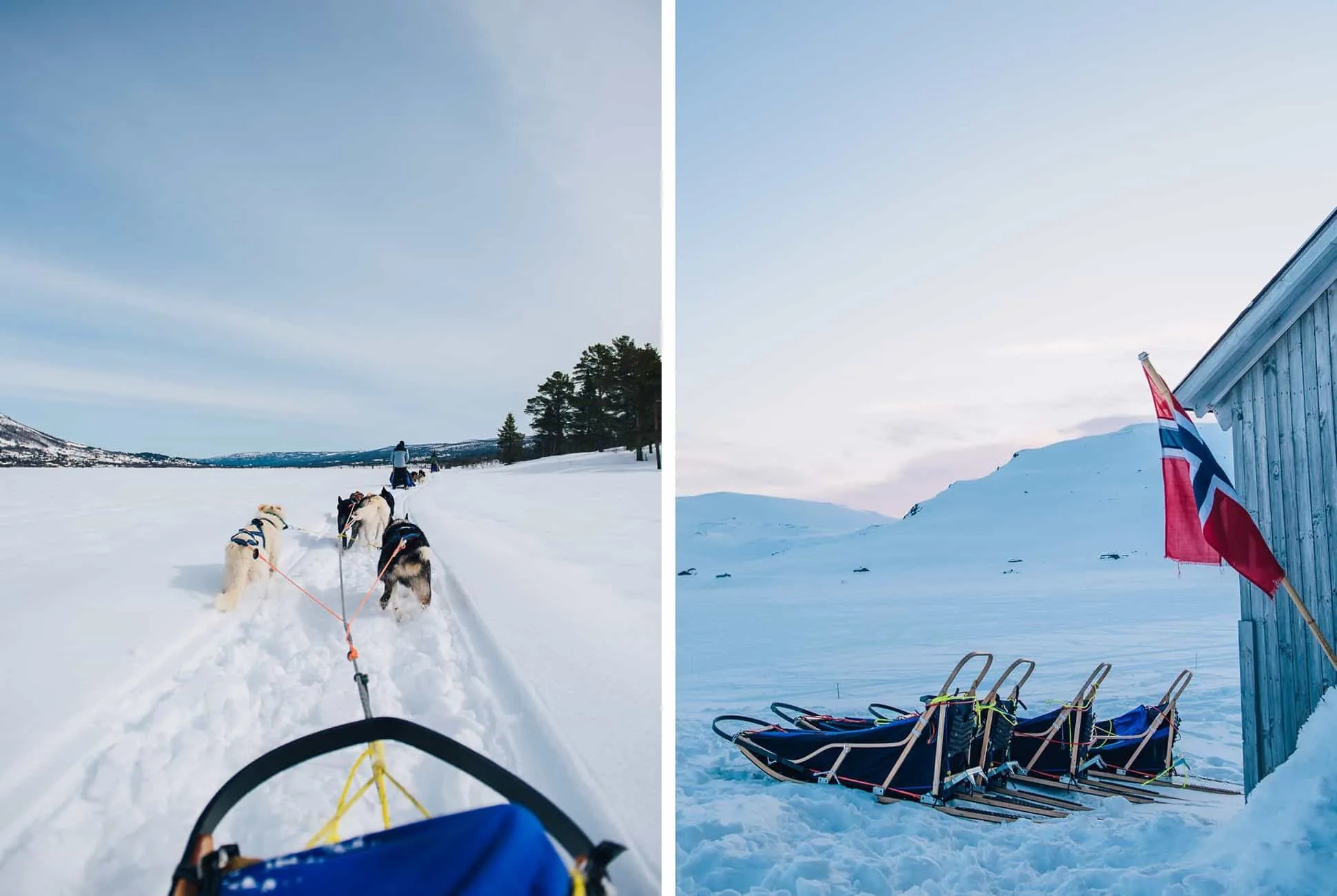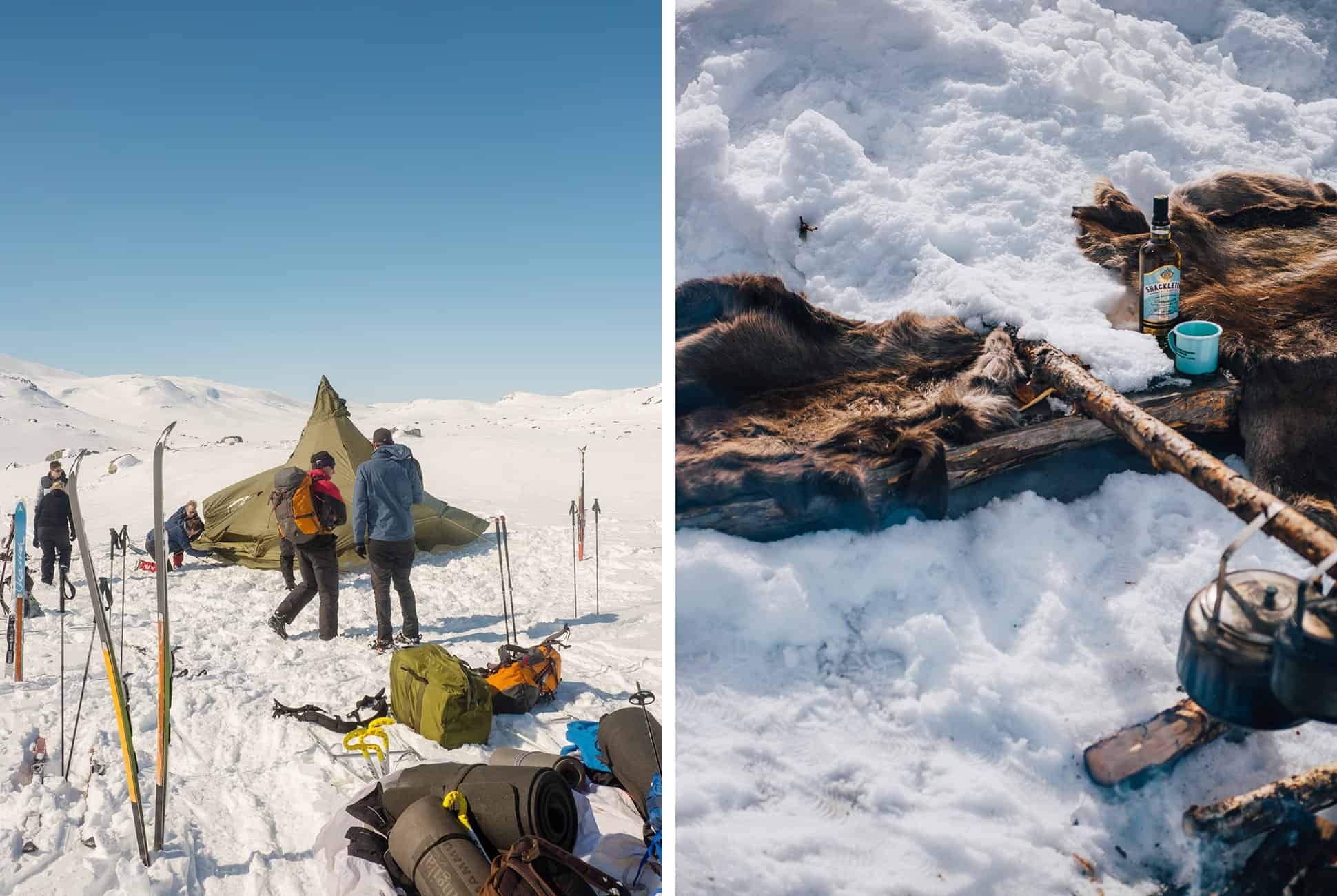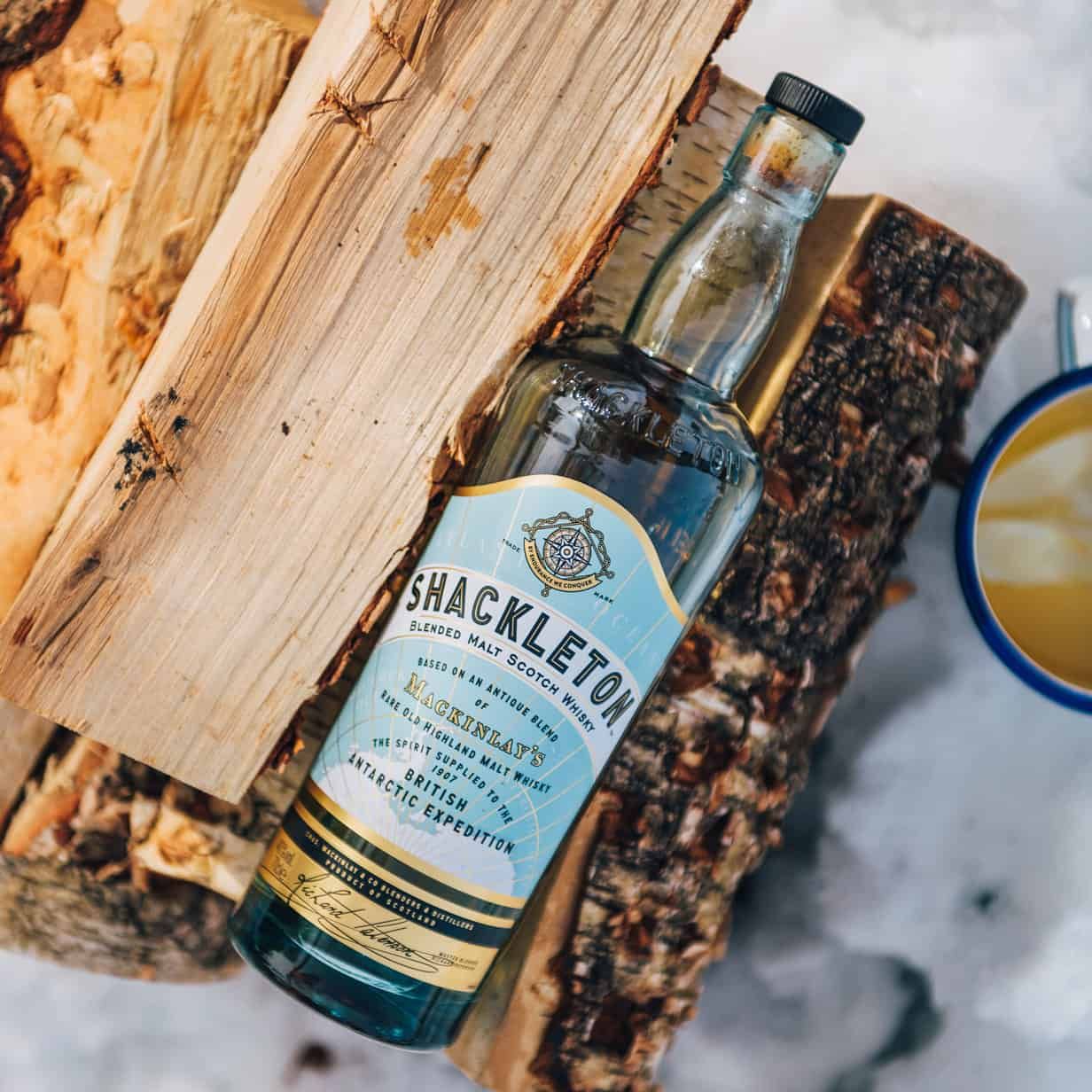Left: Tim Jarvis recreating Earnest Shackleton’s 1914 Endurance Expedition (shot on a period-correct 1912 Kodak Vest Pocket Camera). Right: The man himself, Sir Ernest Shackleton (center)
Q: What inspired you to recreate Shackleton’s journey?
A: Sir Edmund Hillary actually described Shackleton’s journey as the greatest survival journey of all time. Without a doubt, the rescue mission he undertook after his ship sank ended up being a far greater achievement than his original goal of trying to cross Antarctica. I wanted to try and emulate what he had done in the manner in which he had done it, in part to honor his memory on the centenary of his original journey and in part because it represented an incredible personal challenge for me. It was such an audacious trip that it is difficult not to be inspired by it.
I also wanted our retracing his journey to be about several things over and above the adventure and honoring his achievement. One of the key things was showing how Shackleton’s leadership and teamwork ethic could be applied to some of the challenges we’re faced with today. Central to this was the ability he had to get his teams to put aside their differences to pull together as one to achieve difficult goals.
Q: Rather than just retracing Shackleton’s steps, you also used rudimentary gear, a replica of his boat and the same style of clothing. Why did you choose to do it that way? It certainly wasn’t the easy route.
A: It was very important to do it as he had done it to both honor his original achievement as well as get a sense of what it would have been like for him on his original journey. That meant using period clothing, including nails through the soles of our boots for grip in the mountains of South Georgia, building a replica of his boat the James Caird, traditionally navigating using a compass, sextant and chronometer and eating the same, frankly, miserable expedition rations as he did. About the only positive was that his original expedition manifest included several bottles of today’s Shackleton Whisky, which was faithfully reproduced from the original and given to us. This provided such much-needed fortitude on more than one occasion.
Q: How did you convince your crew to join and how did you choose them? What went into the planning and preparation overall?
A: The planning and preparation took about 5 years from start to finish and of course the risks start long before the physical challenge of trying to sail a small keel-less, capsize-prone (and frankly unseaworthy) wooden boat across the Southern Ocean, or climb a mountain without any climbing gear begins. These include reputational risks, financial risks and the risks associated with putting 5 years of your life into something that may ultimately fail spectacularly. There are also many hard, lonely moments you face in planning and bringing together major expeditions, one of the biggest of which is finding the right people.
In the end, it didn’t take that long to find the right people. Shackleton allegedly ran an advert saying “Men wanted for hazardous journey. Low wages, bitter cold, long hours of complete darkness. Safe return doubtful. Honor and recognition in case of success” and got 3,000 applicants for 27 places). I got 200 applicants for 5 places so obviously, there’s an ongoing appeal in pitting yourself against the forces of nature like this!

